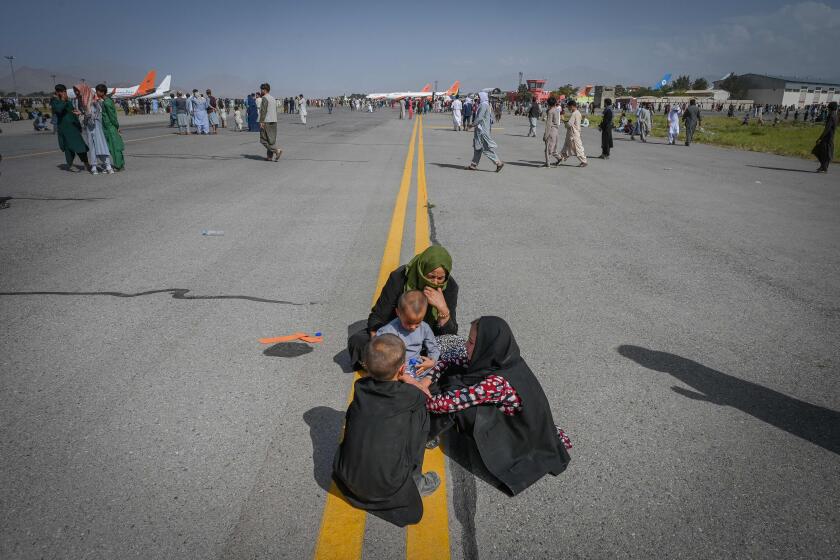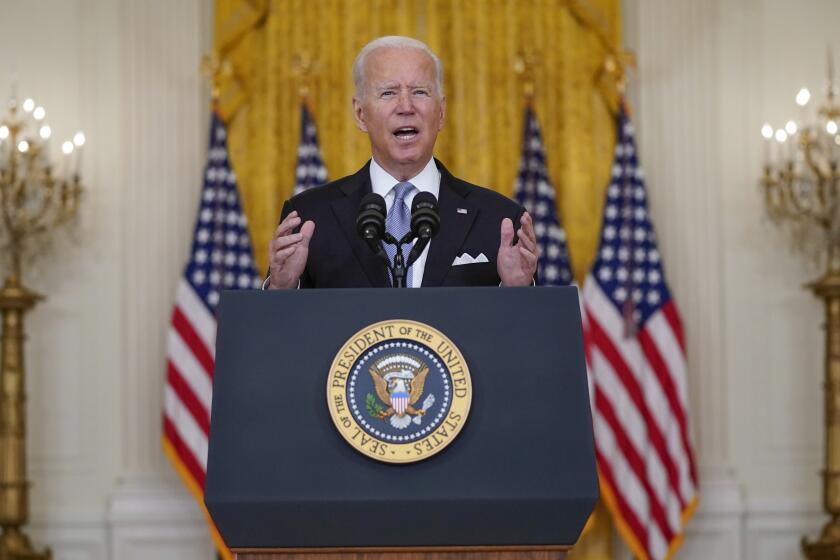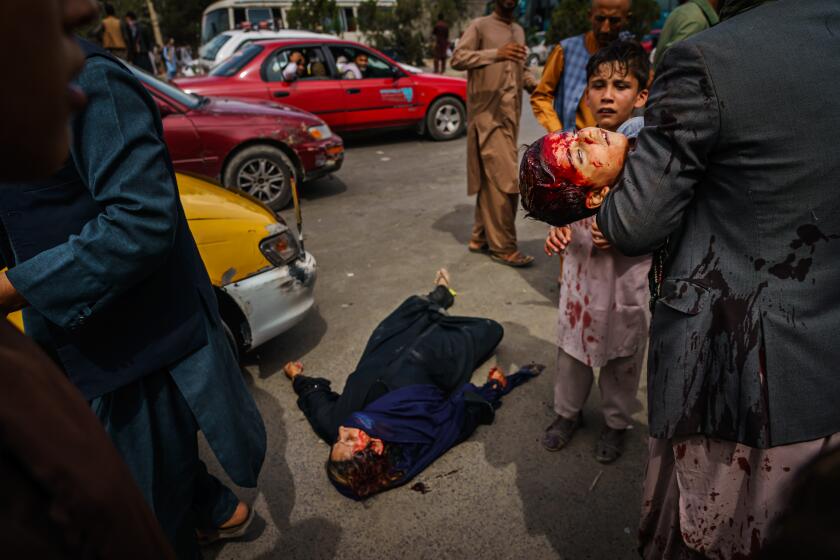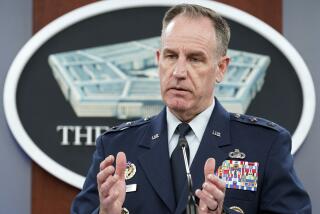The Taliban is now benefiting from the billions spent on building Afghanistan’s army

- Share via
WASHINGTON — Built and trained at a cost of $83 billion, Afghan security forces collapsed so quickly and completely that the ultimate beneficiary of the American investment has turned out to be the Taliban, which grabbed not only political power but also U.S.-supplied firepower — guns, ammunition, helicopters and more.
Taliban fighters captured an array of modern military equipment when they overran Afghan forces who failed to defend district centers. Bigger gains followed, including combat aircraft, when the Taliban seized provincial capitals and military bases with stunning speed, culminating in the capture of Kabul, the national capital, over the weekend.
A U.S. defense official Monday confirmed that the Taliban’s sudden bonanza of U.S.-supplied Afghan equipment is enormous. The official was not authorized to discuss the matter publicly and so spoke on condition of anonymity. The reversal is an embarrassing consequence of misjudging the viability of Afghan government forces — by the U.S. military as well as intelligence agencies — which in some cases chose to surrender their vehicles and weapons rather than fight.
Afghans panic and try to flee Monday after Kabul fell to the Taliban
The U.S. failure to produce a sustainable Afghan army and police force, and the reasons for their collapse will be studied for years by military analysts. The basic dimensions, however, are clear and not unlike what happened in Iraq. The forces turned out to be hollow, equipped with superior arms but largely missing the crucial ingredient of combat motivation.
“Money can’t buy will. You cannot purchase leadership,” John Kirby, chief spokesman for Defense Secretary Lloyd J. Austin III, said Monday.
Doug Lute, a retired Army lieutenant general who helped direct Afghan war strategy during the George W. Bush and Barack Obama administrations, said that what the Afghans received in tangible resources they lacked in the more important intangibles.
President Biden addressed the American people about the messy U.S. pullout from Afghanistan. He stood by his decision and said there was no good time to leave.
“The principle of war stands: Moral factors dominate material factors,” he said. “Morale, discipline, leadership, unit cohesion are more decisive than numbers of forces and equipment. As outsiders in Afghanistan, we can provide materiel, but only Afghans can provide the intangible moral factors.”
By contrast, the Taliban insurgents, with smaller numbers, less sophisticated weaponry and no air power, proved a superior force. U.S. intelligence agencies largely underestimated the scope of that superiority.
“If we wouldn’t have used hope as a course of action, ... we would have realized the rapid drawdown of U.S. forces sent a signal to the Afghan national forces that they were being abandoned,” said Christopher Miller, who saw combat in Afghanistan in 2001 and was acting secretary of Defense at the end of former President Trump’s term.
Stephen Biddle, a professor of international and public affairs at Columbia University and a former advisor to U.S. commanders in Afghanistan, said Biden’s announcement in April that he was withdrawing all U.S. troops set the final collapse in motion.
Before that, the Afghan government troops were slowly but steadily losing the war, Biddle said. When they learned that their American partners were going home, an impulse to give up without a fight “spread like wildfire.”
Some elements of the Afghan army did fight hard, including commandos whose heroic efforts are yet to be fully documented. But as a whole, the security forces created by the United States and its NATO allies collapsed in dramatic fashion.
The Afghan force-building exercise was so completely dependent on American largesse that the Pentagon even paid the Afghan troops’ salaries. Too often that money, and untold amounts of fuel, were siphoned off by corrupt officers and government overseers who cooked the books, creating “ghost soldiers” to keep the misspent dollars coming.
Of the approximately $145 billion the U.S. government spent trying to rebuild Afghanistan, about $83 billion went to developing and sustaining its army and police forces, according to the Office of the Special Inspector General for Afghanistan Reconstruction, a congressionally created watchdog that has tracked the war since 2008. The $145 billion is in addition to $837 billion the United States spent fighting the war, which began with an invasion in October 2001.
The Taliban swept into Kabul and seized power on Sunday after President Ashraf Ghani fled the country.
The $83 billion invested in Afghan forces over 20 years is nearly double last year’s budget for the entire U.S. Marine Corps and is slightly more than what Washington budgeted last year for food stamp assistance for about 40 million Americans.
In his book, “The Afghanistan Papers,” journalist Craig Whitlock wrote that U.S. trainers tried to force Western ways on Afghan recruits and gave scant thought to whether U.S. taxpayers dollars were investing in a truly viable army.
“Given that the U.S. war strategy depended on the Afghan army’s performance, however, the Pentagon paid surprisingly little attention to the question of whether Afghans were willing to die for their government,” he wrote.
More to Read
Sign up for Essential California
The most important California stories and recommendations in your inbox every morning.
You may occasionally receive promotional content from the Los Angeles Times.
















